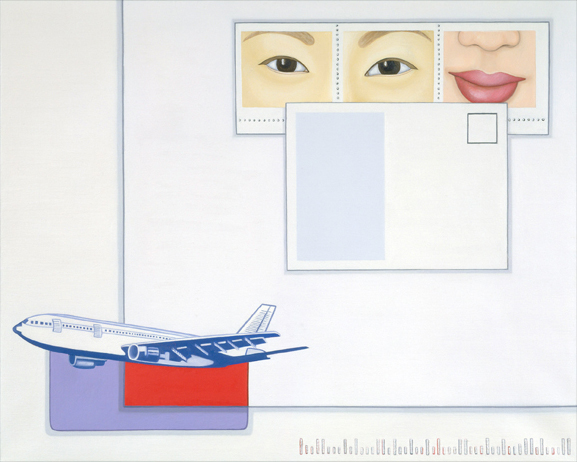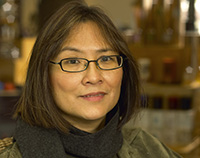Li-lan, Foreign Correspondent
Scarlet Cheng
Unfinished Journey – Lin & Keng Gallery Exhibition Catalogue, Taipei, Taiwan
November 2006
“I want to paint a world of stillness but on the verge of turbulence, motionless yet almost falling apart, a sleep-death landscape yet full of pulsating tension and flux.” -Rudolf Baranik, artist
Living between two worlds comes naturally to Li-lan. Born in cosmopolitan New York City, she would be raised between two cultures, Chinese and American. And later, during the 17 years she lived between the United States and Japan, she further learned that borders are fluid, not fixed. Of course, there are very real differences between countries and cultures, physical and manifest differences in geography, architecture, costumes, and customs. However, as adults can pick and choose, we can adopt specifics of dress and address — and we can travel between identities.
Then there are those other borders, the unseen ones. These are equally, if not more important, for us to acknowledge. They include the critical division between left brain and right brain thinking, the split between the reasoned and the rational versus the intuitive and the irrational. It is said that artists rely far more on the right brain than the regular population does, which I believe allows them to travel more easily in the unseen worlds, the worlds below or beyond the surface of daily realities. There is also the dialectic between change and permanence, between the chaos of human experience and the order that we try to impose on it.
These ideas are all present in Li-lan’s work, although at first glance most viewers may see before them worlds of stillness. Here the wind does not blow, and the earth does not spin. Discrete objects sit neatly arranged against a background of creamy white. And the objects themselves are often contained, not only by the diameters of the paper or canvas — but by the perforated edge of a postage stamp, a printed border, an envelope, or an architectural detail. With their postmarks, commemorative panels, and trompe-l’oeil postage stamps, we could be looking at postcards or envelopes.
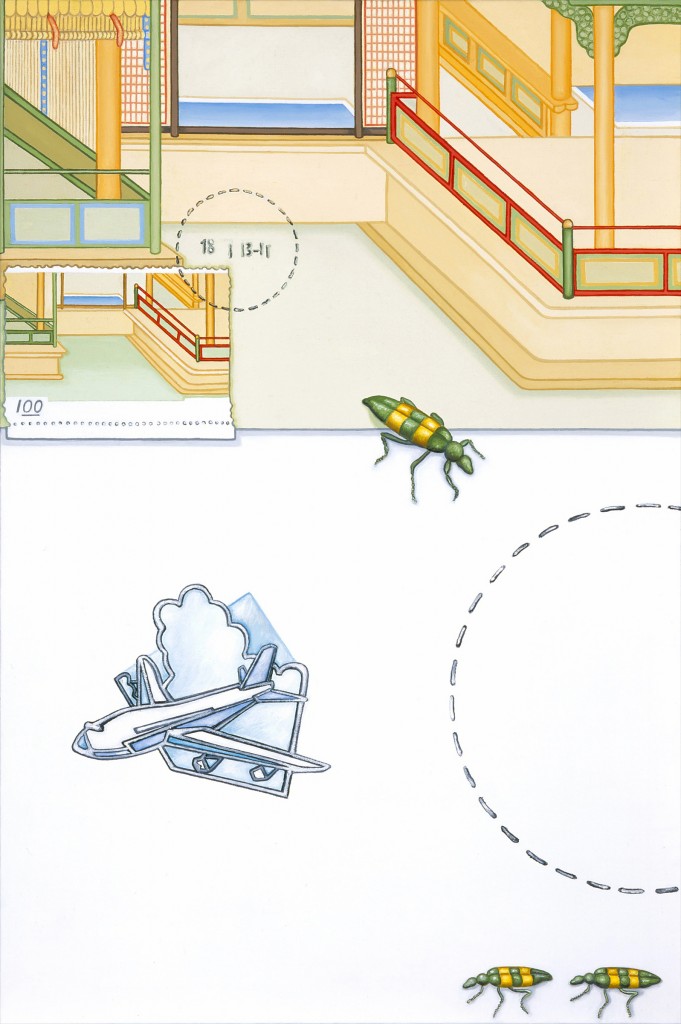 Court – 2003
Court – 2003
However, looking closer, one begins to see suggestions of movement and of schism. In the painting “Court” an insect begins to walk off the edge of an architectural detail, perhaps to join his two colleagues aligned on the lower edge of the canvas. It is a thought both humorous and unsettling.
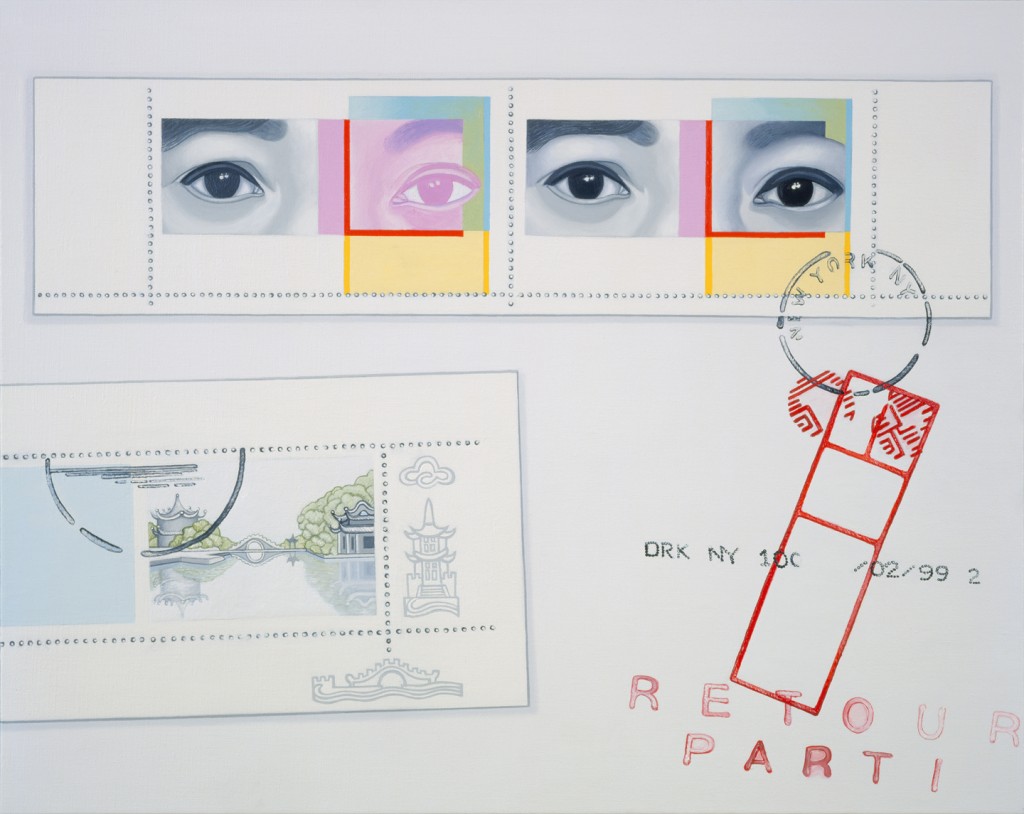 Two Views Bridged – 2000
Two Views Bridged – 2000
In “Two Views Bridged” and “Journey: Round Trip,” paired eyes stare out, each on a separate stamp or color panel, as if the subject were suffering a kind of double-vision. In “Flight Path” and “Air Space,” airplane postmarks fly in opposing directions.
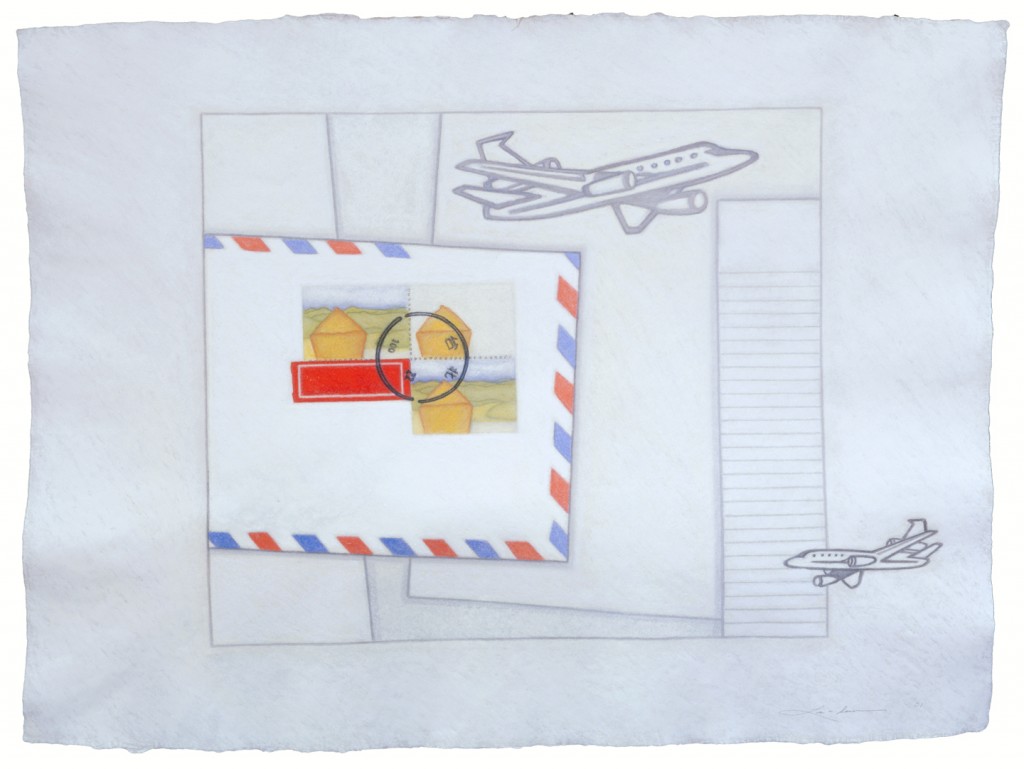
Flight Path – 2001
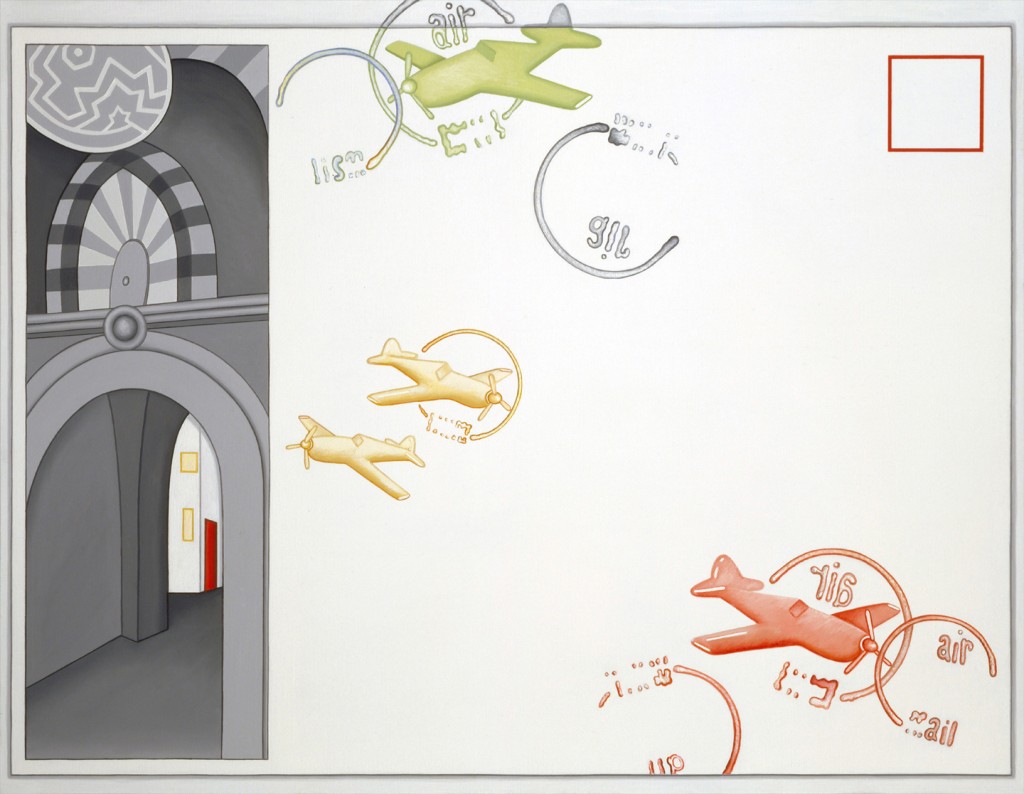
Air Space – 2002
For a generation of Expressionist painters, the dynamics of push and pull were created by bold brushwork, vibrant colors, and density of paint. In the works of Li-lan, her surfaces may seem calm and understated, but her subjects are perched on the edge of change, if not disarray. Over the last decade her work has evolved from full depictions of stamped and postmarked mail to images more evocative and less exact. They incorporate rather dislocating elements, such as stamps that bear no national or denominational identifications, or insects and amphibians that crawl from nowhere. Some might wonder at the juxtaposition — orderly architecture or landscapes which seem reassuring, with airplanes and creatures that may seem threatening. Li-lan does not see the contradiction of placing such elements side by side. “For me it’s natural, ” she says. “There’s always the coexistence of opposites, war and peace, the scary and the safe. One thing doesn’t exist without the other.”
A true artist is always evolving. In the past she saved stamps, postcards, and envelopes, and would select elements from various sources to create one painting. These days, she also finds images in books, newspapers, and magazines, as well as photographs she or her friends have taken. Some of the implications have changed, as the world has changed. Take the airplanes, rendered often as rubber stamps, which had seemed so friendly before. Now, after the tragedy of 9/11, which occurred only five blocks from where Li-lan was living at the time, they carry the weight of menace. While she realizes that implication, her own fascination for these man-made birds is benign. “I like looking at them while I’m sitting in my studio and gazing out the window,” she says. “I’m always wondering where they’re going, and who’s traveling on them.”
Indeed, her canvases are fantasy worlds, abstracts of her thinking. “I don’t really like traveling,” she admits, “but I like being in another place. I guess if I paint it, I don’t have to go.” Through the images, Li-lan invites us along on her voyage. They conjure up faraway places — stamps, airplanes, foreign languages, exotic architecture and cultures.
It is no accident that the artist has chosen to focus on a series of work about correspondence and travel. Having grown up between two cultures, and having been married to a Japanese artist, she has always been keenly aware of multiple cultural identities and the strengths and weaknesses and particularities that come with them. In this vast cauldron, sometimes called the Melting Pot, how do we really connect with one another? Especially as traditions and traditional communities fall apart?
As Western, and especially American, culture becomes the decisive arbiter of fashion, film, and other trends, the world seems to be merging into one big stew. However, recent calamities of war and deluge have shown us that in fact people in different parts of the world, even in different parts of the United States, are still living in highly fractured socio-economic and cultural environments. We find ourselves facing a world splitting at the seams from discord and disunity.
On Li-lan’s canvases, all seems reassuringly calm and quiet. Yet, as mentioned, beneath that tranquil surface are harbingers of the anxiety and angst rife in the modern world. Still, we are drawn to her work. We are drawn to them for their tranquility and beauty, the subtlety of color, their exquisite execution. At the same time we might ponder the dilemmas they pose. Here, in one painting, or one drawing, we might find the reconciliation that we find lacking in life.
SCARLET CHENG writes regularly about film and the visual arts, and has been published in the Los Angeles Times, ArtNews, Art & Auction, and Vogue. She has been a writer and editor at Time-Life Books in Alexandria, VA, and the managing editor of Asian Art News magazine in Hong Kong. Currently, she also teaches at Otis College of Art & Design and Art Center College of Design in Los Angeles.
